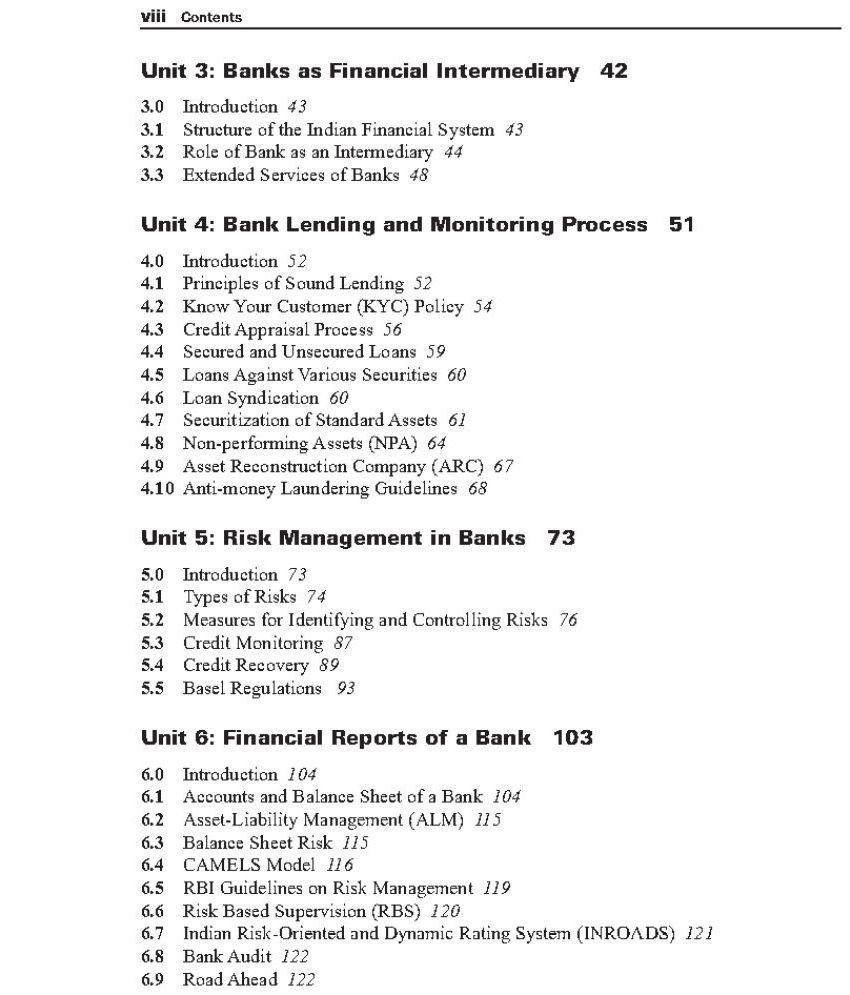Banking and Insurance is aimed towards understanding the concepts, regulations, strategies and operations of the banking and insurance system. Major emphasis has been given to the risk management practices in banks in India as well as in the global scenario. Primarily designed as a textbook for undergraduate students specializing in banking and insurance, this book will also prove to be a handy reference for the postgraduate students of management and commerce and students across all professional courses (CA, CMA and CS).
Features –
• Acquaints the students with the recent developments in banking and insurance sectors
• Includes Case Studies and Caselets that encourage the readers to learn about the practical aspects of the industry
• Teaching plan and Structured Assignments to help the instructors proceed with the flow of the case during lectures
• Rich pedagogy including numerous tables, charts, and end-of-chapter review questions
About the Author
Saptarshi Ray is working as a Faculty Member in the Postgraduate and Research Department of Commerce, St. Xavier’s College (Autonomous), Kolkata.PN
Sayanee Nayak is presently working as a Faculty Member in the Department of Commerce, Shri Shikshayatan College, Kolkata.
Content –
Foreword X,
Preface XI,
Acknowledgements XII,
List of Abbreviations XIII,
About the Authors XV
Unit 1: Introduction to Banking Business - 1.0 Prologue, 1.1 Origin of Banking, 1.2 Banking Sector Reforms in India, 1.3 Classification of Banks, 1.4 Banker and Customer Relationship, 1.5 Role of Central Bank as Regulator, 1.6 RBI Policies on Commercial Banks, 1.7 Banking Regulation Act, 1949, 1.8 Banking Ombudsmen,
Unit 2: Banking Products and Banking Services – 2.0 Introduction, 2.1 Important Terms used in Banking Business, 2.2 Financial Services Offered by Bank, 2.3 Asset Products - Types of Loans and Advances, 2.4 Liability Products - Types of Deposits, 2.5 Internet Banking, Application of Artificial Intelligence and Cyber Security,
Unit 3: Banks as Financial Intermediary – 3.0 Introduction, 3.1 Structure of the Indian Financial System, 3.2 Role of Bank as an Intermediary, 3.3 Extended Services of Banks,
Unit 4: Bank Lending and Monitoring Process – 4.0 Introduction, 4.1 Principles of Sound Lending, 4.2 Know Your Customer (KYC) Policy, 4.3 Credit Appraisal Process, 4.4 Secured and Unsecured Loans, 4.5 Loans Against Various Securities, 4.6 Loan Syndication, 4.7 Securitization of Standard Assets, 4.8 Non-performing Assets (NPA), 4.9 Asset Reconstruction Company (ARC), 4.10 Anti-money Laundering Guidelines,
Unit 5: Risk Management in Banks – 5.0 Introduction, 5.1 Types of Risks, 5.2 Measures for Identifying and Controlling Risks, 5.3 Credit Monitoring, 5.4 Credit Recovery, 5.5 Basel Regulations,
Unit 6: Financial Reports of a Bank – 6.0 Introduction, 6.1 Accounts and Balance Sheet of a Bank, 6.2 Asset-Liability Management (ALM), 6.3 Balance Sheet Risk, 6.4 CAMELS Model, 6.5 RBI Guidelines on Risk Management, 6.6 Risk Based Supervision (RBS), 6.7 Indian Risk-Oriented and Dynamic Rating System (INROADS), 6.8 Bank Audit, 6.9 Road Ahead,
Unit 7: Insurance and Insurable Risk – 7.0 Introduction, 7.1 Concept of Insurance, 7.2 Types of Insurance - Life and General (Non-Life) Insurance, 7.3 Actuarial Practice for Life and Non-LI, 7.4 Basic Concept of Insurable Risk, 7.5 Perils and Hazards, 7.6 Types of Business Insurance, 7.7 Risk Assessment and Transfer, 7.8 Principles of Insurance, 7.9 Reinsurance, 7.10 Bancassurance, 7.11 Online Insurance, 7.12 Current Scenario of Insurance Business in India,
Unit 8: Regulatory Framework of Insurance – 8.0 Introduction, 8.1 Regulation of Insurance Business in India, 8.2 Overview of IRDA Act, 8.3 Microinsurance Regulations in India,
Case 1: Microfinance Lending in India –A Road towards Financial Inclusion,
Case 2: White Collar Crimes in Indian Banking Industry –The Case of Bank,
Case 3: Consolidation in the Indian Banking Industry –Road towards Sustainable Banking
Case Lets 167,
Index 169






